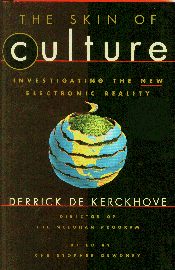Lisa Gitelman: Always Already New. Media, History, and the Data of Culture (2006)
Filed under book | Tags: · internet, media history, new media, sound recording, web

“In Always Already New, Lisa Gitelman explores the newness of new media while she asks what it means to do media history. Using the examples of early recorded sound and digital networks, Gitelman challenges readers to think about the ways that media work as the simultaneous subjects and instruments of historical inquiry. Presenting original case studies of Edison’s first phonographs and the Pentagon’s first distributed digital network, the ARPANET, Gitelman points suggestively toward similarities that underlie the cultural definition of records (phonographic and not) at the end of the nineteenth century and the definition of documents (digital and not) at the end of the twentieth. As a result, Always Already New speaks to present concerns about the humanities as much as to the emergent field of new media studies. Records and documents are kernels of humanistic thought, after all—part of and party to the cultural impulse to preserve and interpret. Gitelman’s argument suggests inventive contexts for “humanities computing” while also offering a new perspective on such traditional humanities disciplines as literary history.
Making extensive use of archival sources, Gitelman describes the ways in which recorded sound and digitally networked text each emerged as local anomalies that were yet deeply embedded within the reigning logic of public life and public memory. In the end Gitelman turns to the World Wide Web and asks how the history of the Web is already being told, how the Web might also resist history, and how using the Web might be producing the conditions of its own historicity.”
Publisher: MIT Press, September 2006
ISBN 0262072718, 9780262072717
xiii+205 pages
Review: Jussi Parikka (Mute).
PDF (removed on 2013-11-12 upon request of the publisher)
Comment (0)Erin Manning: Relationscapes: Movement, Art, Philosophy. Technologies of Lived Abstraction (2009)
Filed under book | Tags: · abstract machine, art history, biopolitics, body, dance, film theory, language theory, new media, painting, perception, philosophy

With Relationscapes, Erin Manning offers a new philosophy of movement challenging the idea that movement is simple displacement in space, knowable only in terms of the actual. Exploring the relation between sensation and thought through the prisms of dance, cinema, art, and new media, Manning argues for the intensity of movement. From this idea of intensity—the incipiency at the heart of movement—Manning develops the concept of preacceleration, which makes palpable how movement creates relational intervals out of which displacements take form.
Discussing her theory of incipient movement in terms of dance and relational movement, Manning describes choreographic practices that work to develop with a body in movement rather than simply stabilizing that body into patterns of displacement. She examines the movement-images of Leni Riefenstahl, Étienne-Jules Marey, and Norman McLaren (drawing on Bergson’s idea of duration), and explores the dot-paintings of contemporary Australian Aboriginal artists. Turning to language, Manning proposes a theory of prearticulation claiming that language’s affective force depends on a concept of thought in motion.
Relationscapes is a radically empirical book, working directly out of examples and delving into the complexity of relations these examples suggest. It takes a “Whiteheadian perspective,” recognizing Whitehead’s importance and his influence on process philosophers of the late twentieth century—Deleuze and Guattari in particular. Relationscapes is truly a transdisciplinary book, not aiming to cover the ground of a particular discipline but making clear how the specificity of a particular inquiry can alter key questions that emerge in the interstices between disciplines. It will be of special interest to scholars in new media, philosophy, dance studies, film theory, and art history.
Publisher MIT Press, 2009
ISBN 026213490X, 9780262134903
272 pages
PDF (updated on 2013-1-29)
Comment (0)Derrick De Kerckhove: The Skin of Culture: Investigating the New Electronic Reality (1995/1997)
Filed under book | Tags: · cyberculture, mass media, new media, technology, television, virtual reality

This is a bold vision of the electronic media and the nature of reality in a world increasingly wired to technology. It proposes and explores concepts such as: whether democracy is outmoded and must be redesigned to reflect how technology affects power structures; whether the electronic media have extended our psychology as well as our nervous systems and our bodies; whether art must redress the balance with science and reclaim technology; and whether electronic media are reversing the effects of language, literacy and the alphabet, and whether this is a good thing.
Editor Christopher Dewdney
Publisher Kogan Page Publishers, 1997
ISBN 074942480X, 9780749424800
226 pages
PDF (no OCR; some pages missing; updated on 2012-12-5)
Comment (0)
